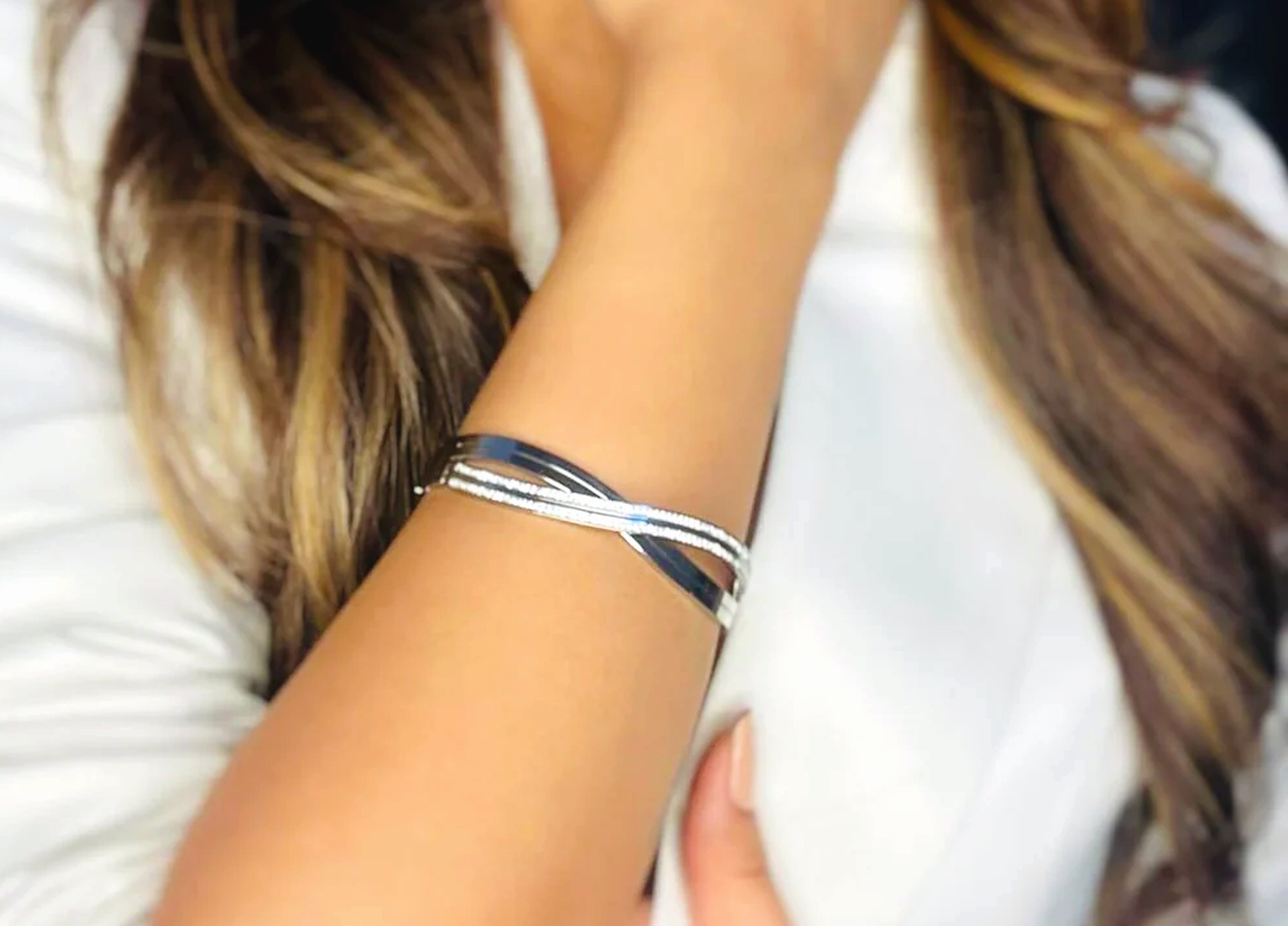Art Deco, which emerged in the 1920s and was at its height until the late 1930s, left an artistic and indelible mark on jewellery design. Based on the ideology of modernity and motivated by the pace of social and technological change defining the period, Art Deco differed from the rich flowing style of its immediate predecessor, Art Nouveau. Rather, it favoured geometric patterns and clean lines with a sense of drama and symmetry and order. The style itself captured the optimism and energy of the post-World War I period.
Art Deco jewellery itself embodied a thrilling combination of luxury and innovation. The designers were inspired by so many different things Egyptian motifs in the aftermath of the discovery of Tutankhamun's tomb, African and Asian tribal art, and the streamlined shapes of new machinery. Jewel stones like emeralds, sapphires, and rubies were mostly used alongside onyx, jade, and lapis lazuli to produce striking contrast patterns. Platinum became the preferred metal because of its durability and versatility, which enabled delicate settings and fine craftsmanship.
Art Deco jewellery transformed not only aesthetically but also as an indicator of society's change, most notably the changing role of women. As freedoms grew, hairstyles lengthened, and fashion relaxed, women's jewellery evolved to be more functional, streamlined, and a statement of personality. Even today, a hundred years on, Art Deco continues to stimulate designers and collectors alike with its ageless chic and unashamed love of glamour and modernity.
Origins of the Art Deco Movement
Art Deco style emerged in the 1920s, a period of great societal change, artistic innovation, and break from past traditions. The movement was named after the 1925 Exposition Internationale des Arts Décoratifs et Industriels Modernes in Paris. Art Deco expressed the dynamism of the modern era, mixing refinement with the machine-style aesthetic of the industrial age.
Key Features in Jewellery Design
Art Deco jewellery is characterized by its simplicity of line, geometric shapes, and balanced forms. Its designers moved away from the curvaceous, naturalistic curves of Art Nouveau towards solid forms and abstract shapes. Triangles, circles, zigzags, and step forms featured prominently, regularly appearing in geometric, mathematical combinations.
Contrast between material and colour was another signature. Gemstones such as jade, onyx, sapphire, and coral were contrasted with diamonds and platinum to produce dramatic designs. The contrast was not limited to materials but also to structure, where hard lines and soft elements coexisted in harmony.
Influences and Innovation from Culture
Art Deco never was and could never be born in isolation for it absorbed influences fertilized by discoveries and cultures throughout the world. The discovery of King Tutankhamun's tomb in 1922 aroused kinks into the Egyptian motifs. This influence sat somewhere in the skewed cuboid-shaped lockets, homing apparitional architecture precision and symmetry reminiscent of ancient exteriors.
A further move was made here incorporating aspects from Indian and African culture. This global influence could now reinterpret an old name for the basic forms-silver kada into an angular Deco form, thus combining cultures and modernity.
Contemporary Styles of Art Deco
Art Deco's influence can still be observed in modern jewellery design, both in high-end collections and a more personal project. The personalisation of a silver bracelet is an example of this. Its minimalism in metelling is usually rigidly contrasted with geometric engravings or modular links taken from Art Deco architecture. Cuboid-shaped locket avoids ornateness in rectangularity, which is characteristic of the times, while it allows itself to be interpreted in a contemporary manner.
Art Deco's impact on jewellery design is as lasting as it is iconic. Emerging from a world that was changing in rapid ways, the movement brought with it a new aesthetic one that was celebrating modernity, precision, and elegance. Merging industrial shapes with opulent materials, a style was formed that was refined and revolutionary at once.
Today, we see this legacy endure in bespoke, everyday jewellery that takes its structural beauty from Deco. No matter whether in the crisp edges of a cuboid locket, the elegant geometry of a silver personalised bracelet, or the culture-modern marriage of a silver kada with name, Art Deco lives on. Each of these objects is not just an accessory a bridge between bygone and modern times, the fusion of bygone inspiration and contemporary relevance. In a time when style and individuality are everything, Art Deco jewellery is still an ageless means of making a strong, sophisticated statement.
The Art Deco movement transformed the design of jewels in a way that continues to resonate a century later. Emerging from a rapidly changing world of style, culture, and technology, Art Deco brought the bold rhythm of geometry and symmetry, and fashionably modern elegance into focus. The influence came as a sharp rupture from the ornate, flowy motifs of the earlier era to a world of sharp lines, structured forms, and a bold take on colour and material.
Such timeless principles continue to live on in the modern jewel world, especially in custom and culture-based pieces. An idiomatic example of this would be the clean, architectural silhouette of the cuboid locket, a direct descendant of the Art Deco love for minimalism and form. It is undoubtedly an epitome of the design language of that era yet also sits easily among the perfection-seeking current trend of meaningfulness in jewellery.
The silver customized bracelet unites simplicity with personal expression two things that are at the heart of Art Deco. Understated sophistication, frequently elevated through the addition of geometric engraving or structural properties, reflects the equilibrium between form and function that characterized the movement.
The name kada in silver also symbolizes the lasting influence of Deco-inspired jewellery, blending Indian traditional jewellery with contemporary, symmetrical lines. The inclusion of a name within a sleek silver shape shows how design and personal storytelling can work together a beautiful example of how the Art Deco ethos is reimagined for modern tastes.
In the end, Art Deco jewellery was and continues to be a celebration of self-assurance, identity, and creativity. Its impact extends beyond fashion; it encapsulates an attitude that appreciates both accuracy and imagination. As jewellery progresses, Art Deco continues to serve as a benchmark for designers and wearers alike, providing a vocabulary of refinement that remains as valid today as it did in the 1920s. With items like the silver customized name bracelet, silver name kada and locket, we continue to respect a design heritage based on beauty, form, and uniqueness.




Leave a comment
All comments are moderated before being published.
This site is protected by hCaptcha and the hCaptcha Privacy Policy and Terms of Service apply.